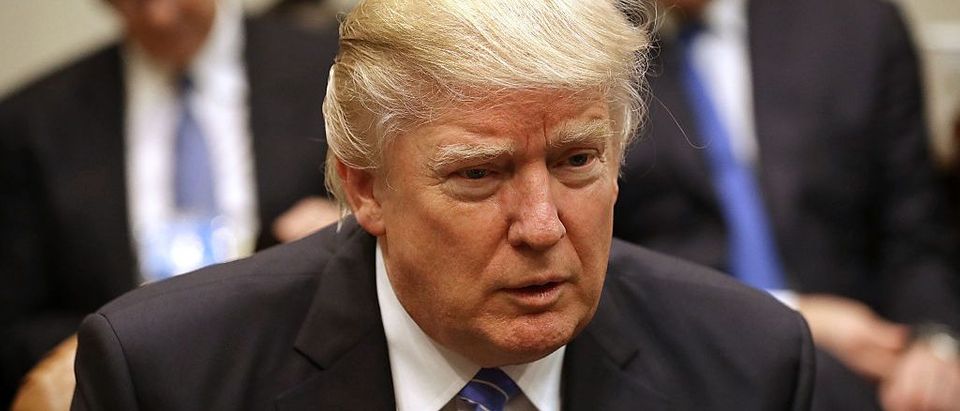Trump’s social media mastery offers history’s greatest presidential opportunity to circumvent the media. On his political odyssey, Trump has been nothing short of an explorer, a Columbus insisting the world was round and that he could reach his goal by undiscovered routes. Now that he has arrived, do not expect him to abandon what helped get him there.
Trump has been much derided for prolifically using Twitter to communicate with America. Although limited to 140 characters, it is seemingly unlimited in its impact. If anything, that potential is growing and, hard as it may be for many to believe, Trump likely still has not realized its full political clout.
Obama, not Trump, was the first president to politically exploit social media. Over eight years ago, his campaign assembled an enormous and sophisticated social media effort. Far from being just a trendy novelty, he adeptly used it to raise huge sums of cash and motivated followers. His opponents – first Clinton, then McCain – felt firsthand its devastating effects.
As good as Obama was with social media, Trump already appears to be better. Even before entering the White House, he has used it to seize the media by the throat, almost at will and without warning. Far from being just its beneficiary as Obama was, Trump himself has proven its supremely skillful practitioner.
Twitter’s power comes from its immediacy and direct, unfiltered access to tens of millions. Coupled with Trump’s own acute sense of the electorate’s concerns, it becomes a powerful political tool, even more daunting than Obama’s as social media operation. However in Trump’s hands, it is demonstrating the unique ability to both circumvent the established media and simultaneously draw the media into his communication strategy.
With the exception of Obama, presidents have not had the ability to get unfiltered messages to the American people. They had to follow the media’s dictates to a great extent. They were also bound by the established media’s own limitations – slow, scheduled, and limited in its reach. And inevitably, presidents were subject to the media’s editorial analysis – sometimes subtle, sometimes blatant, but always the “monopoly price” they had to pay to reach the nation.
The media’s monopoly “fee” of editorializing cost Obama nothing. Because of its liberal bias, it actually served to subsidize Obama’s presidency. For Trump, if forced to pay, it would be costly indeed. During the campaign, while Trump was often his own worst enemy, the media always ran at least a close second. If left to their own devices, the media would be nothing less once he took office.
The chance to circumvent the liberal media is certainly desirable for Trump. It is also increasingly attainable. Trump is well ahead of where Obama was at the same stage. Obama did not reach 10 million Twitter followers until 2011 – well into his third year in office. Trump today is closing in on 20 million.
Twitter’s rapidly increasing popularity and the power of the presidency to attract followers to it promise to stoke Trump’s ability to end-run the media even more. Obama is now the most popular politician in office with 80 million followers. That eightfold increase in under five years is due to the technology’s rapidly increasing popularity and the presidency’s enormous ability to utilize it. For Trump that is a message marriage made in heaven.
In comparison to the Obama and Trump Twitter numbers, the established media’s are paltry. .
NBC, the top network nightly newscast attracts just 9.2 million viewers per night. All three major networks attract about 25 million. Primetime cable news is far smaller with the top four reaching just under 6 million in primetime. USA Today, the nation’s top newspaper by circulation, has just 2.3 million readers and the top 10 papers have just over 8 million.
These outlets are also already held hostage by Trump’s Tweets because they are news – and will only become more so, once he is president. The media may try to editorialize in their coverage, but they still must first report them – that gives Trump access to their audiences too.
Trump’s other advantage is a larger target audience than Obama’s. As successful as Obama has been, he still led a center-left coalition. With the left the smallest segment of the American ideological spectrum, his message resonance was limited. Yet, he still won two terms.
America remains a center-right country. Trump’s campaign primarily appealed here. In November, Republicans were 33% of voters and Trump won 88%; Independents were 31% and Trump beat Clinton 46%-42%. Trump has the potential to grow his already sizable audience.
For eight years in office, Obama more than held his own with American voters – despite governing from left-of-center, which should have yielded him only minority support. He succeeded in doing so in no small part through his own savvy use of social media and extremely favorable treatment from the liberal media.
In contrast, Trump takes office having won a smaller percentage of the vote – an absolute minority – but with the potential to form an even larger center-right base of support. Trump’s use of social media and that resource’s rapidly growing popularity – combined with his presidency’s boost to penetration – gives him a chance to reach Obama’s successful destination by a different route.
Like an explorer, Trump could arrive at Obama’s destination by another route. By circumventing the media, he could effectively circumnavigate America’s political landscape.
The author served in the Treasury Department and the Office of Management and Budget from 2001 to 2004 and as a Congressional staff member from 1987 to 2000


